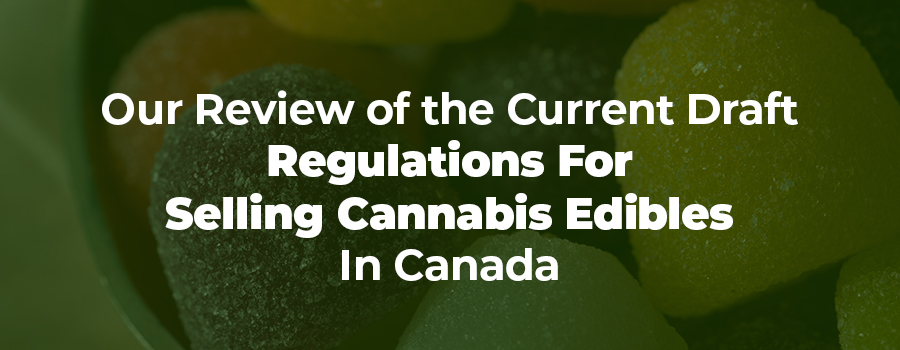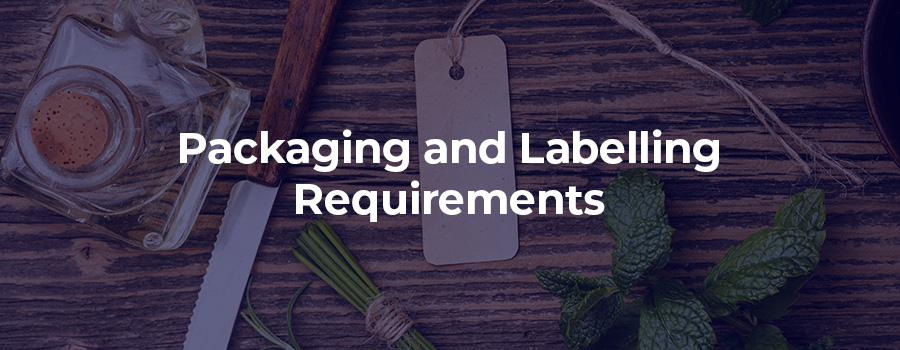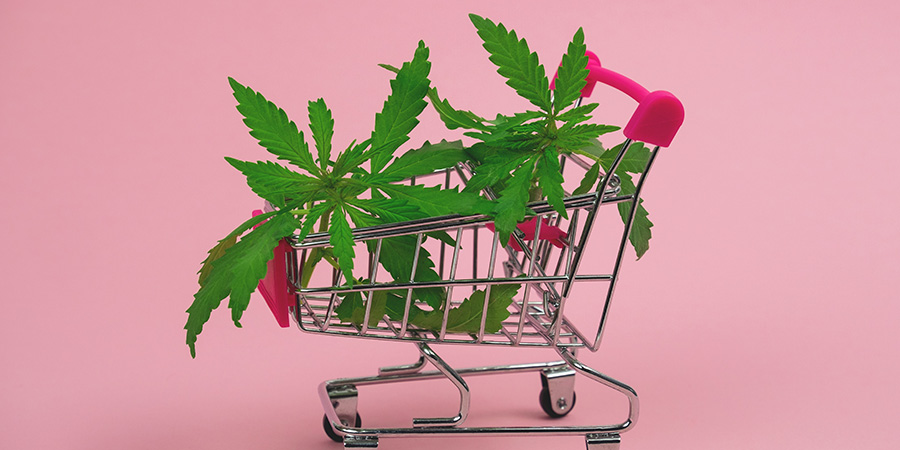Wondering when edibles are going to be legal in Canada? What about Health Canada’s regulations for edible cannabis products? The results of the draft regulations are out. Here’s our review of the proposed regulations for edible cannabis, cannabis extracts, and cannabis topicals in Canada.
When Are Edibles Legal In Canada & What Are Health Canada’s Regulations for Dispensaries?
So when are edibles going to be legal in Canada? According to Section 193.1 of the Cannabis Act, cannabis edibles will be legal in Canada no later than October 17, 2019.
So it’s perfect timing that Health Canada has now released its proposed regulations for edible cannabis, cannabis extracts, and cannabis topicals. This is huge news for cannabis and CBD companies, and especially for retail and online marijuana dispensaries.
If you’re curious about if edibles are legal in Canada, when are edibles legal in Canada and what are the regulations for edible cannabis in Canada, this article is for you!
We’re going to review Health Canada’s proposed regulations for selling cannabis edibles, cannabis extracts and cannabis topicals at marijuana dispensaries in Canada.
For some quick background we look back to December 22, 2018, when Health Canada published draft regulations (Draft Regulations) in the Canada Gazette, which will regulate the following new classes of cannabis:
- Edible Cannabis: Products containing cannabis that are intended to be consumed in the same manner as food (i.e., eaten or drunk).
- Cannabis Extracts: Products that are produced using extraction processing methods or by synthesizing phytocannabinoids.
- Cannabis Topicals: Products that include cannabis as an ingredient and that are intended to be used on external body surfaces (i.e., skin, hair, and nails).
Health Canada launched a 60-day public consultation on these Draft Regulations, which actually ended on February 20, 2019.
However, the results of the public consultation have not been published yet. So in the meantime, the following is our review of the current Draft Regulations for selling cannabis edibles in Canada.

Licensing
Part 2 of the current Cannabis Regulations2 establishes the classes (i.e., cultivation, processing, and sale) and subclasses (i.e., standard/micro-cultivation, standard/micro-processing) of licenses that authorize activities with cannabis at the federal level.
A processing license (either standard or micro) will be required in order to manufacture, package and label edible cannabis, cannabis extracts and cannabis topicals for sale to consumers. The following additional requirements will also apply to licensed processors:
- A past conviction for an offense under the Safe Food for Canadians Act3 (SFCA), or any of the Acts that will be repealed when the SFCA comes into force, will be a ground for refusal or revocation of a processing license if the conviction occurred within the preceding 10 years.
- The Cannabis Regulations currently state that a licensed processor must retain the services of an individual with the necessary training, experience, and technical knowledge to act as a Quality Assurance Person (QAP). The Draft Regulations specify that the QAP must have the necessary qualifications to oversee the production of all classes of cannabis that the licensed processor is authorized to produce (including training, experience, and technical knowledge of both good production practices and product rules). However, if the QAP does not have the requisite knowledge and training with respect to edible cannabis, the license holder must retain the services of another individual with the necessary qualifications.
To read the third point go here.
Production Practices For Edibles
Part 5 of the Cannabis Regulations currently impose requirements on federal license holders relating to the production, distribution, and storage of cannabis to control the quality of cannabis produced by federal license holders.
The Draft Regulations would impose additional rules to prevent contamination of cannabis products and address the risk of foodborne illness associated with edible cannabis. For example:
- Current requirements relating to the cleanliness of equipment used with cannabis or ingredients will be expanded to also include anything that is used within the licensed facility to transport cannabis or ingredients used in the production of cannabis products (e.g., forklift, hand lifts, etc.).
- Licensed cultivators and processors will be required to have a ventilation system that provides clean air and removes unclean air that may have a negative impact on the cannabis or ingredients.
- Existing controls designed to prevent the contamination of cannabis would be expanded, at least in the case of licensed processors, to also cover ingredients intended to form part of a cannabis product.
Read points 4-9 here.

Testing Procedures For Cannabis Edibles
The Draft Regulations will make minor revisions to rules governing the sampling and testing of cannabis. For example:
- When conducting microbial and chemical contaminant testing, the licensed processor will now have the option of conducting testing on either the final form of the cannabis product or at the final step in the production process during which the contaminants could be concentrated. For example, if a cannabis extract is used in the production of a cannabis topical, the licensed processor would have the option of conducting testing on the cannabis extract or on the final form of the cannabis topical.
- The current Cannabis Regulations state that levels of microbial and chemical contaminants must be within established limits for herbal medicines. Under the Draft Regulations, microbial and chemical limits will need to be within limits that are appropriate for the intended use of the product (e.g., ingestion, inhalation, etc.).
Product Rules For New Cannabis Classes
Product Composition and Ingredients
Certain Product Forms Prohibited
Product forms that pose a greater risk to human health, such as those intended to be used in or around the human eye (for example, eye drops), or products that are intended to be used on damaged or broken skin, or to penetrate the skin barrier by means other than by absorption (i.e., through the use of abrasives or needles) will continue to be prohibited.
Limits on Tetrahydrocannabinol (THC)
The Draft Regulations will establish THC limits, as follows:
- For edible cannabis, there will be a limit of 10 mg of THC per discrete unit (i.e., individual serving) and per immediate container (the container that is in direct contact with cannabis, not including any wrapper). For example, an immediate container could contain one discrete unit of edible cannabis that contains 10 mg of THC. It also could contain two discrete units, which each contain five mg of THC.
- For cannabis extracts, there will be a limit of 10 mg of THC per discrete unit that is intended to be ingested or for nasal, rectal or vaginal use (e.g., a capsule). In addition, there will be a limit of 1,000 mg of THC per immediate container. For example, an immediate container could contain 100 capsules of an extract that each contain 10 mg of THC, or 200 capsules of an extract that each contains five mg of THC.
Read points 3 & 4 on Dentons.com.
Variability Limits For THC and Cannabidiol (CBD)
The Draft Regulations also establish “variability limits” on the amount of THC and CBD permitted in the new classes of cannabis:
1.The following variability limits will apply to edible cannabis:
- If the total quantity of THC or CBD that is displayed on the label exceeds five mg, the product cannot contain less than 85 percent of that amount, or more than 115 percent of that amount.
- If the quantity of THC or CBD that is displayed on the label is more than two mg but less than five mg, the product cannot be less than 80 percent of that amount or more than 120 percent of that amount.
- If the quantity of THC or CBD that is displayed on the label is less than two mg, the product cannot be less than 75 percent of that amount or more than 125 percent of the amount displayed on the label.
2. Cannabis extracts and cannabis topicals cannot contain less than 85 percent of the amount displayed on the label, or more than 115 percent of that amount.
Read points 3-5 on here.
Edible Cannabis
The following rules will apply to edible cannabis:
- Only food and food additives may be used as ingredients in edible cannabis. In addition, the use of food additives must be in accordance with the limits and purposes that are prescribed for foods in the Food and Drug Regulations4 (FDR).
- Edible cannabis may not be fortified with vitamins or mineral nutrients.
- Edible cannabis must not contain caffeine unless it has been introduced through the use of ingredients that naturally contain caffeine (i.e., chocolate, tea, or coffee). In addition, the total amount of caffeine in the immediate container must not exceed 30 mg.
- Edible cannabis must not contain ethyl alcohol, although a small concentration of ethyl alcohol that does not exceed 0.5 percent w/w of the edible cannabis will be permitted since ethyl alcohol is often present as a by-product in fermented ingredients or products (e.g., vinegar).
Read points 5-9 on here.
Cannabis Extract
The following rules will apply to cannabis extracts (products that are produced using extraction processing methods or by synthesizing phytocannabinoids):
- Cannabis extracts must not contain any ingredients other than: (1) carrier substances, (2) flavouring agents, or (3) substances that are necessary to maintain the quality or stability of the cannabis product. For example, adding nicotine to cannabis extracts will be prohibited.
- Cannabis extracts cannot contain sugars, sweeteners or sweetening agents.
- Cannabis extracts cannot contain ingredients that are listed in Column 2 of Schedule 2 to the Tobacco and Vaping Products Act (https://laws-lois.justice.gc.ca/eng/acts/t-11.5/page-13.html#h-27). For example, the addition of vitamins, mineral nutrients and probiotics will be prohibited.
Cannabis Topicals
A cannabis topical must also not contain any ingredient that may cause injury to the health of the consumer when the product is used as intended, or in a reasonably foreseeable way.
Cannabis Accessories
The Draft Regulations include amendments designed to ensure that cannabis accessories do not increase the potential for harm associated with cannabis products, and to establish dispensing limits for accessories containing certain cannabis extracts. For example:
- A cannabis accessory must not, through chemical means other than heating or combustion, alter or enhance the effects of the product, increase the potential for physical dependence on the product, or increase the toxicity of the cannabis product when used as intended.
- A cannabis accessory that dispenses a cannabis extract intended for ingestion or nasal/rectal/vaginal use must not dispense a maximum yield quantity that exceeds 10 mg of THC.

Packaging and Labelling Requirements
The packaging and labelling requirements that currently apply to all cannabis products (e.g., the standardized cannabis symbol, health warning messages, THC and CBD content, and child-resistant packaging) will apply to the new classes of cannabis.
However, the Draft Regulations provide for specific additions and adjustments to account for the new classes of cannabis and to address the public health risks associated with these new classes (i.e., risk of accidental consumption and overconsumption).
However, the Draft Regulations provide for specific additions and adjustments to account for the new classes of cannabis and to address the public health risks associated with these new classes (i.e., risk of accidental consumption and overconsumption).
Labelling Requirements
The Draft Regulations impose the following labelling requirements on the new classes of cannabis and to cannabis accessories containing those classes of cannabis:
- In addition to the current labelling requirements that apply to all cannabis products, the following information will be required on the label of all edible cannabis: (1) a list of ingredients; (2) the common name of the cannabis product; (3) an indication of the source of an allergen or gluten, or that sulphites have been added to the product (alternatively, this information could appear as part of the ingredient list); (4) a “best-before date,” which will apply to edible cannabis products that are expected to deteriorate over a period of 90 days or less; and (5) a cannabis-specific nutrition facts table.
- In addition to the current labelling requirements that apply to all cannabis products, the following information will be required on the label of all cannabis extracts: (1) a list of ingredients; (2) the identity of the cannabis product in terms of its common name or function; (3) a list of allergens; and (4) the intended use of the product (e.g., “for vaping”).
Read points 3 & 4 on here.
Packaging Requirements
The Draft Regulations also make the following changes to the existing packaging requirements:
- There will be an exception to the current prohibition on the use of a naturally-occurring metallic colour on the external surface of an immediate container that is made of metal, which will allow for the use of metal beverage cans.
- The exterior surface of any container in which a cannabis product is packaged will no longer need to have a matte finish.
- The immediate container for cannabis extracts will need to be designed in such a way that the extract cannot be easily poured, or drunk directly from the container. For extracts in liquid form that are not intended to be inhaled, and which contain at least 10 mg of THC, the container will need to include an integrated dispensing mechanism that dispenses no more than 10 mg of THC, unless the extract is in the form of discrete units (e.g., a capsule).
- In the case of edible cannabis, there will be a requirement to use “food-grade” packaging (i.e., packaging that meets requirements set out in the FDR and the Safe Food for Canadians Regulations (https://laws-lois.justice.gc.ca/eng/regulations/SOR-2018-108/index.html) (SFCR) for food) for the immediate container and for any wrappers.
Read points 5-8 on here.
Prohibitions on Representations
The Draft Regulations will prohibit the following representations on all product packages and labels:
- It will prohibit representations regarding health benefits, including those that are currently permitted on food (applies to all classes of cannabis).
- It will prohibit nutrient content representations that go beyond those permitted in the list of ingredients and cannabis-specific nutrition facts table, including those that are currently permitted on food (applies to edible cannabis only).
- It will prohibit representations regarding cosmetic benefits (applies to all classes of cannabis).
- It will prohibit all representations that associate a cannabis product, its packaging or its labelling (including its brand element) with an alcoholic beverage. For example, it will not be possible to use terms related to alcoholic beverages (e.g., beer, wine, etc.) for cannabis products. In addition, it will not be possible to use the name or logo of a company that manufactures alcoholic beverages on a cannabis product.
- It will prohibit the representation of certain flavours, which are appealing to youth, on the packaging and labelling of cannabis extracts. Other than cannabis flavour, the flavours that are set out in Column 1 of Schedule 3 to the Tobacco and Vaping Products Act are prohibited.
- It will prohibit the representation of edible cannabis as being a suitable means of meeting dietary requirements. For example, it would be prohibited to say that edible cannabis is suitable for people with diabetes, or as part of a low-calorie diet.
These prohibitions will be in addition to the existing prohibitions set out in the Cannabis Act.
Transitional Provisions
The Draft Regulations provide that an order will be made to remove “cannabis oil” from Schedule 4 of the Cannabis Act six months after they come into force, in order to provide for an appropriate transition period. Following the six-month transition period, cannabis oil would be subsumed under the new product classes.
During this proposed six-month transition period, cannabis oil could continue to be sold as a class of cannabis (by federal licence holders, and provincially- and territorially-authorized distributors and retailers), subject to the current rules as they apply to cannabis oil. For example, cannabis oil would continue to be subject to the limit of 10 mg of THC per discrete unit, but the new limit of 1,000 mg of THC per immediate container would not apply to cannabis oil during the transition period.
A six-month transition period for dried or fresh cannabis will also be provided in relation to microbial and chemical contaminants. During the six-month period, microbial and chemical contaminants could remain within established limits for herbal medicines, rather than within limits appropriate for the intended use of the product.
Areas of Potential Concern
One concern is that the Draft Regulations will result in wasteful excessive packaging in the case of edible cannabis. Industry commentators have expressed concern that a limit of 10 mg of THC per discrete unit (i.e., individual serving) and the immediate container will yield an excessive amount of waste that could have a significant environmental impact.
The requirement that the production of edible cannabis take place within another building, if conventional food products are also manufactured at that site, may result in significant infrastructure costs that could limit access to the industry to only the most well-capitalized entrants, particularly in connection with the changes to the licence application process just announced by Health Canada.
Although avoiding cross-contamination or accidental mislabeling/packaging is an important objective, industry commentators have openly wondered whether less costly solutions might be available.
Conclusion
The current version of the Draft Regulations may be considered restrictive on some issues. It remains to be seen whether Health Canada will address these issues before the final regulations are published.
To read the full report written by Henry J. Chang go here.

We Can Help You Market Cannabis Edibles, Extracts and Topicals
If you own an online or retail dispensary or operate a CBD business or other ancillary cannabis brand, we can help you market edibles online in Canada, the UK, and the USA.
We offer social media management services for your brand, as well as digital advertising campaign management.
We have been able to advertise medical cannabis on Facebook, Google, and YouTube. Check out our case studies for details.
If you need an e-commerce website for your dispensary, or a dispensary SEO strategy to increase your search engine results and overall online presence, we can help you with all of that as well.
Please contact us for a free 30-minute phone consult or to request a quote.
We’re Ready To Help You Grow!








